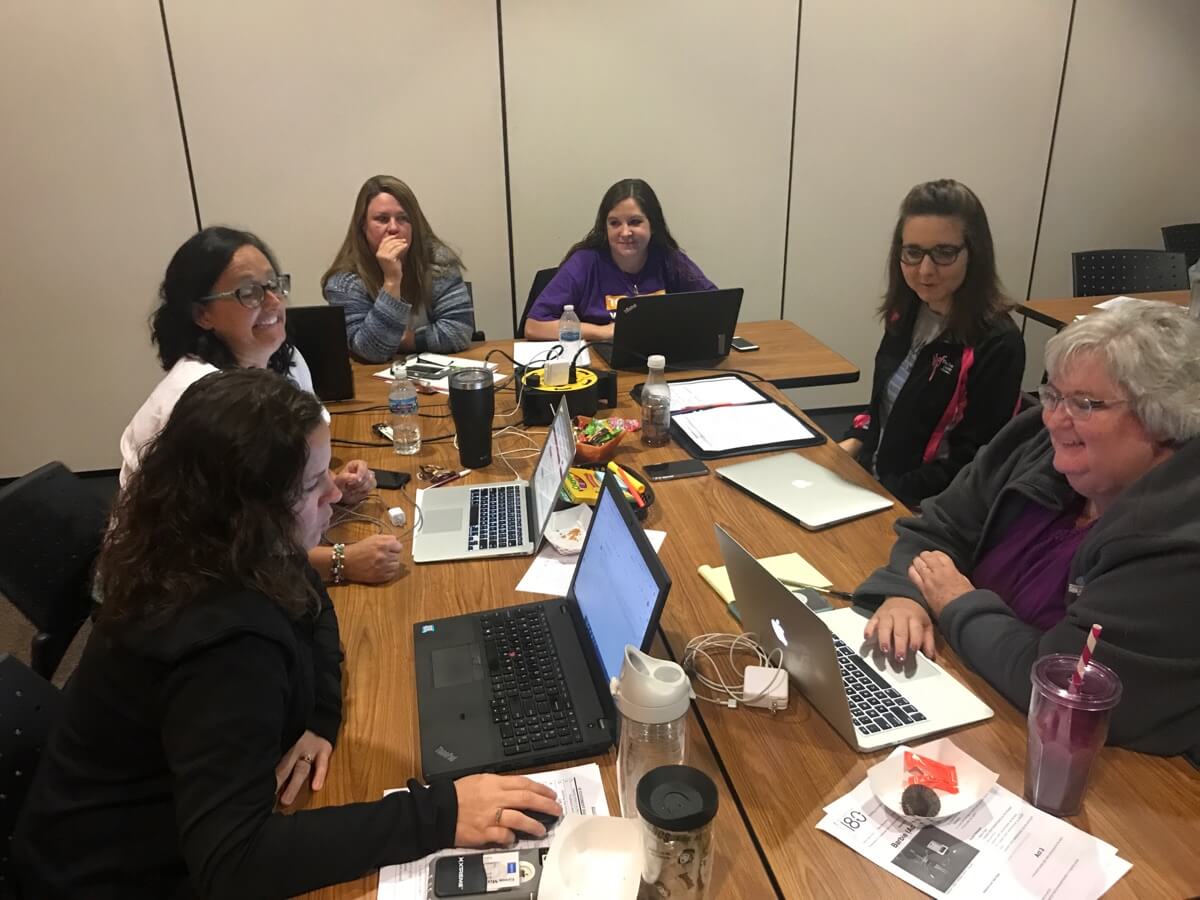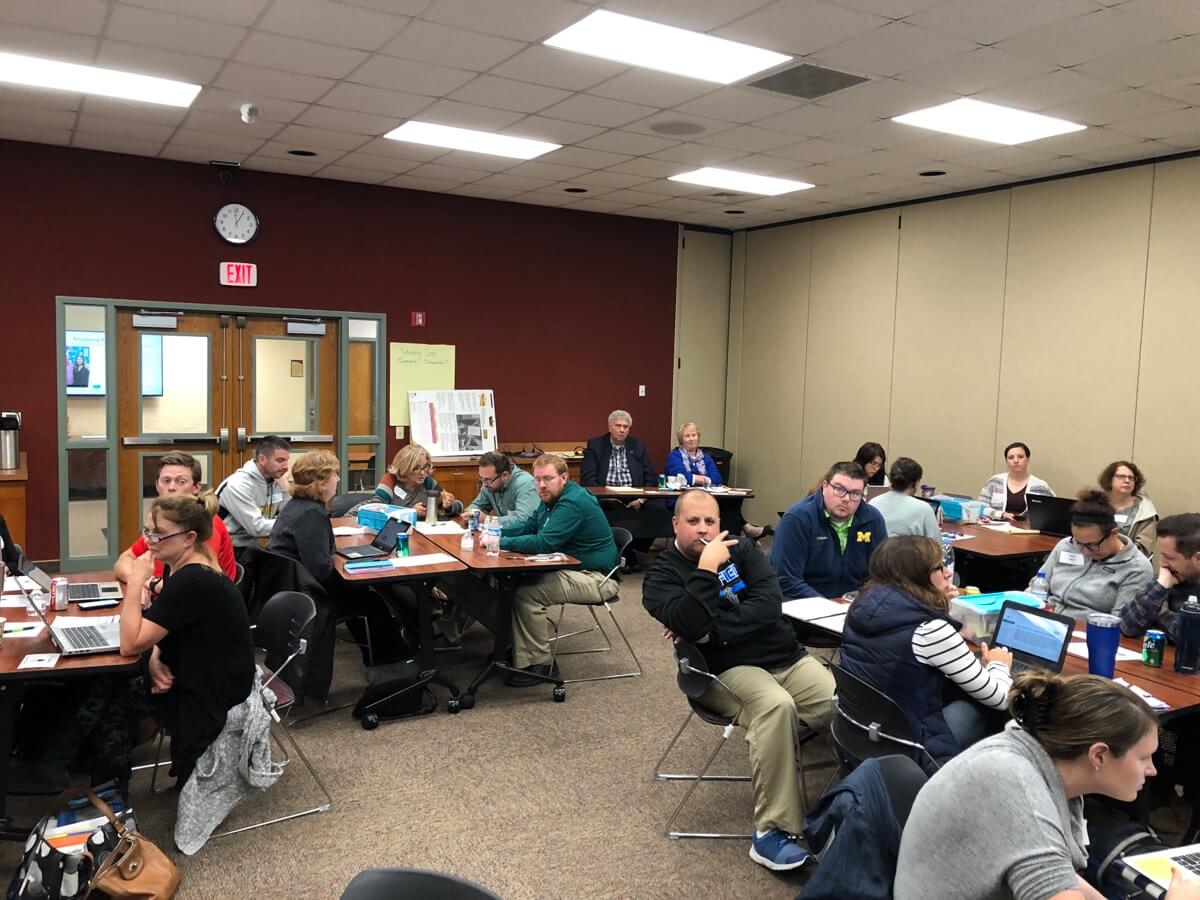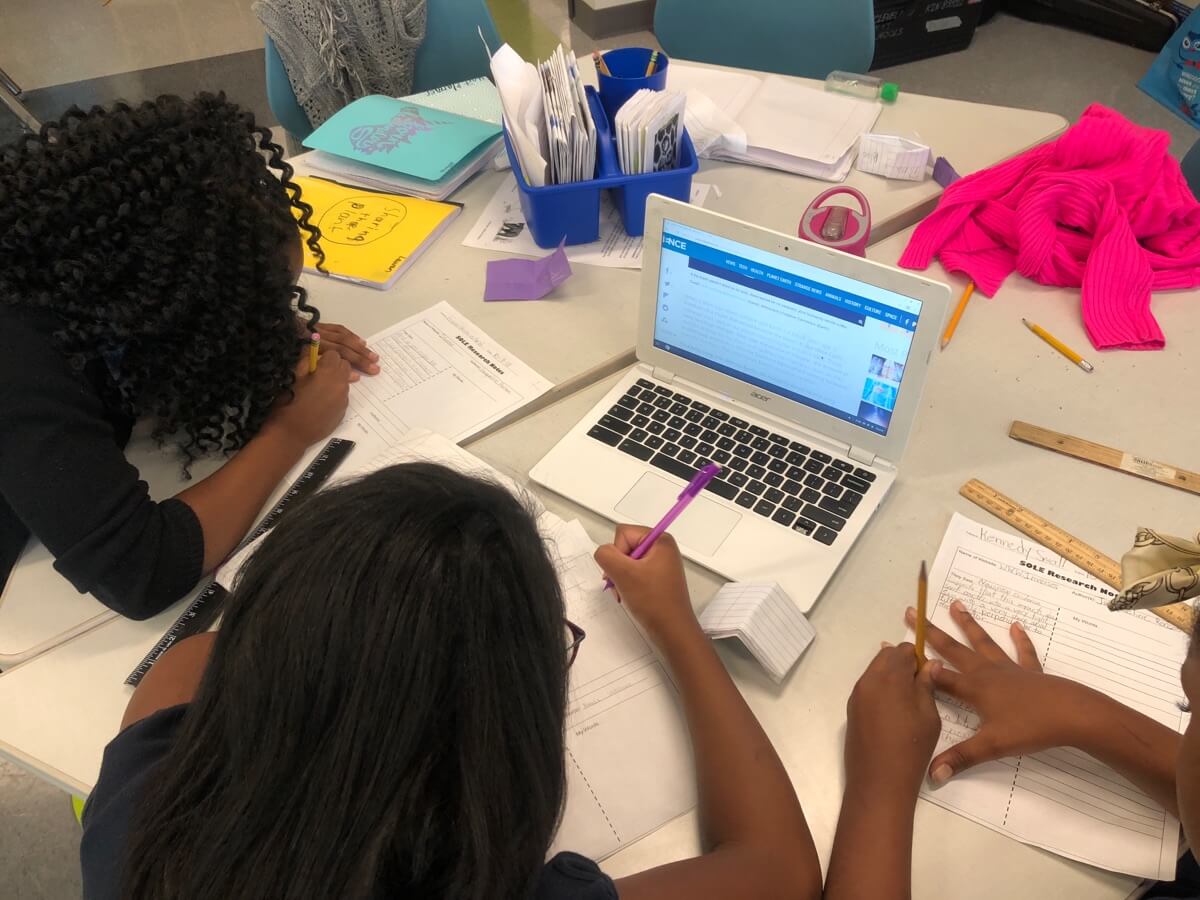 Systems theory proffers that to fully understand the whole, each component of the system must be explored, as well as how these components relate to one another. SOLE is a simple pedagogy that can swiftly reach all parts of an intact system. SOLE pedagogy cuts across traditional structures, supporting existing school outcomes while gently reframing the environment. School systems are a vestibule of dynamic interactions among many disparate parts. The relationships in these systems are complex and occur at many levels. There are therefore multiple layers to pierce before a new pedagogy can be integrated into a school system.
Systems theory proffers that to fully understand the whole, each component of the system must be explored, as well as how these components relate to one another. SOLE is a simple pedagogy that can swiftly reach all parts of an intact system. SOLE pedagogy cuts across traditional structures, supporting existing school outcomes while gently reframing the environment. School systems are a vestibule of dynamic interactions among many disparate parts. The relationships in these systems are complex and occur at many levels. There are therefore multiple layers to pierce before a new pedagogy can be integrated into a school system.
Initial entry into the system first requires approval of the superintendent, followed by the school principals, teachers, etc. Much time and effort is required to convince people of the impact of this new program or pedagogy, and then to prepare the system for the pre-training and infusion of the new pedagogy. Once through all these layers, the teachers must then deliver this pedagogy or program within the classroom. The whole process often creates subtle changes at each level. There are so many new programs available to teachers and school systems that many stakeholders have had bad experiences and are reluctant to embrace change. This is the internal process that impacts the system. On the external side, community leaders and parents need to be convinced that this is something that will help the schools achieve their standards, i.e. high-stakes tests or other benchmarks perceived as critical for that community. There are often multiple reverberations of concern or inquiry that must be overcome for a new process to take hold.
 SOLE differs from this traditional entry of pedagogy or programming into a district. It is simply delivered and its use of existing resources allows for quick access to the student. Once it connects with the student there are many changes that occur, and those changes immediately reverberate back towards the system itself. The students’ experience with SOLE facilitates a change in what the teacher experiences, transforming the teacher’s role and the classroom itself. This knowledge is then communicated to other teachers and the principal via word of mouth, creating an impact from inside to out rathen outside to in. This is what is unique and remarkable about the SOLE system. Teachers are greatly impacted by the way that SOLE is operationalized within their classrooms. Teachers act as navigators and provide structure to the environment during the presentation phase of the SOLE project. During this time teachers are perceived differently by their students and perceive themselves differently as well. Students are now taking responsibility for their own learning and are not depending on the teacher in the same manner. The teacher sees this quick growth and success as a pathway to guide their students to the next level. The SOLE process so dramatically changes the content students are learning that teachers must often reformat their future lesson plans accordingly. One teacher gave the following example: “My students in the SOLE moved so quickly forward (understanding at a deep level the new content) that when answering the question they hit on four of the content areas that I was going to cover in the next two weeks.” The result is increased self agency among the students, which in turn drives the teacher’s motivation. The teacher now recognizes that the students can quickly conquer new material and increase their general behavior skills in the classroom, and this provides for a new milieu where the teacher and student co-create the learning environment. The change in how the student perceives him or herself and the expectation from the teacher creates a new dynamic within the classroom. The teacher who in the past has seen himself or herself as the content expert now realizes that with technology expertise in content they can play a new role. This removes the burden a teacher may feel to need to know everything, and it shifts the responsibility of student learning and outcomes from teacher to student.
SOLE differs from this traditional entry of pedagogy or programming into a district. It is simply delivered and its use of existing resources allows for quick access to the student. Once it connects with the student there are many changes that occur, and those changes immediately reverberate back towards the system itself. The students’ experience with SOLE facilitates a change in what the teacher experiences, transforming the teacher’s role and the classroom itself. This knowledge is then communicated to other teachers and the principal via word of mouth, creating an impact from inside to out rathen outside to in. This is what is unique and remarkable about the SOLE system. Teachers are greatly impacted by the way that SOLE is operationalized within their classrooms. Teachers act as navigators and provide structure to the environment during the presentation phase of the SOLE project. During this time teachers are perceived differently by their students and perceive themselves differently as well. Students are now taking responsibility for their own learning and are not depending on the teacher in the same manner. The teacher sees this quick growth and success as a pathway to guide their students to the next level. The SOLE process so dramatically changes the content students are learning that teachers must often reformat their future lesson plans accordingly. One teacher gave the following example: “My students in the SOLE moved so quickly forward (understanding at a deep level the new content) that when answering the question they hit on four of the content areas that I was going to cover in the next two weeks.” The result is increased self agency among the students, which in turn drives the teacher’s motivation. The teacher now recognizes that the students can quickly conquer new material and increase their general behavior skills in the classroom, and this provides for a new milieu where the teacher and student co-create the learning environment. The change in how the student perceives him or herself and the expectation from the teacher creates a new dynamic within the classroom. The teacher who in the past has seen himself or herself as the content expert now realizes that with technology expertise in content they can play a new role. This removes the burden a teacher may feel to need to know everything, and it shifts the responsibility of student learning and outcomes from teacher to student.
 Teachers who feel safe with letting their students lead in this process become more open-minded to the understanding and efforts of these digital natives. As a result, they begin to explore with the digital natives how to learn in different ways and to expand on the lessons in this new space. SOLE also provides teachers a new group dynamic within the classroom. Teachers begin to see students as taking responsibility for themselves, and students gain a new level of citizenship within this context. This citizenship changes the classroom management, making it the responsibility of the students rather than the teacher. This is a critical shift in the paradigm because it now makes student responsibility incumbent from the start, ultimately driving learning through intrinsic motivation. Each student being able to contribute at his or her own level based on their own set of assets allows each student to feel appreciated at a deeper level. This again is a game changer for students, as they feel more valued in the classroom. It also allows for teachers to emphasize student relationships and growth as opposed to solely focusing on content. Content becomes a priority as a result of good relationships.
Teachers who feel safe with letting their students lead in this process become more open-minded to the understanding and efforts of these digital natives. As a result, they begin to explore with the digital natives how to learn in different ways and to expand on the lessons in this new space. SOLE also provides teachers a new group dynamic within the classroom. Teachers begin to see students as taking responsibility for themselves, and students gain a new level of citizenship within this context. This citizenship changes the classroom management, making it the responsibility of the students rather than the teacher. This is a critical shift in the paradigm because it now makes student responsibility incumbent from the start, ultimately driving learning through intrinsic motivation. Each student being able to contribute at his or her own level based on their own set of assets allows each student to feel appreciated at a deeper level. This again is a game changer for students, as they feel more valued in the classroom. It also allows for teachers to emphasize student relationships and growth as opposed to solely focusing on content. Content becomes a priority as a result of good relationships.
Diagram One: System Impact

In the digital age, students need to understand content in a different manner than in the past. Understanding what is necessary to remember and what is not is a critical next step in educating this digital community. Teachers also have an opportunity to naturally group with each other and discuss the impact of their work in SOLE regardless of their grade level or content area. This provides a natural discourse around teaching versus content which is critical for growth in the digital age. Finding ways to have students become comfortable within context allows for them to reflect about their learning and to leverage their existing knowledge to all components of their education experience.
Utilizing the digital natives’ inherent strengths and working through problems by using technology reinforces student growth and development and ultimately changes the way they learn. Teachers teach to help students progress to the next level and achieve an outcome of student mastery, with the ultimate goal of being prepared for higher education and employment. Providing a comfortable context for learning and focusing on the method of learning allows SOLE to develop students who have greater understanding of their content area. Teachers, as do members of other professions, struggle with the paradigm that they have to know everything within their area of expertise. This is a myth, but the presence of high-stakes tests and holding teachers accountable for the results of those tests, makes it feel like a reality. It forces teachers to focus more on content than on education. Standardization becomes the norm, and methods derived using the classroom’s existing assets receive short shrift. But it is these asset-based methods that can best be utilized to build a greater capacity for learning.
Diagram Two: Impact on Teachers

Teacher Underpinnings
- Role change to student responsibility (i.e. learning and classroom management)
- Different norms in terms of knowledge, focus on teaching not content
- Executing the digital native vs. digital immigrant as an asset
- Opens teacher up to experiment with new pedagogy
System Change
- New milieu from greatest internal stakeholders (student)
- Power shifts throughout the system
- Increased accountability to entire context for student outcomes
- Increased self agency on all levels on student growth
- Clear example of education vs. schooling
 Jeff short bio info here.
Jeff short bio info here.


